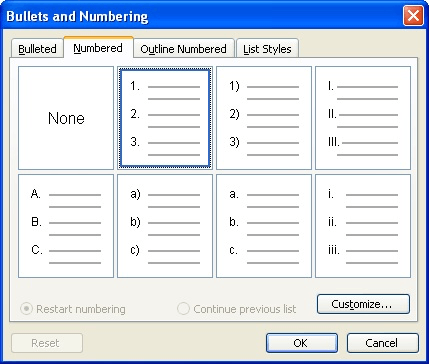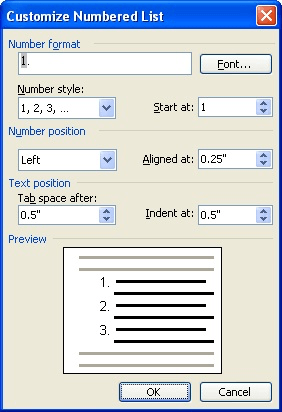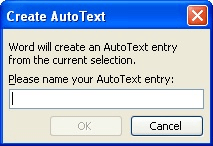Please Note: This article is written for users of the following Microsoft Word versions: 97, 2000, 2002, and 2003. If you are using a later version (Word 2007 or later), this tip may not work for you. For a version of this tip written specifically for later versions of Word, click here: Automatic Question Numbering.
Written by Allen Wyatt (last updated November 17, 2020)
This tip applies to Word 97, 2000, 2002, and 2003
Cara works for a school district, and part of her responsibilities includes putting together some quizzes and tests for teachers. She is looking for a quick way to put together true/false questions, using the following format:
_____ 1. This is the question
There are several different ways you can accomplish this task. Some folks suggest that you use a three-column table. The first column can contain the underline (done either using the underscore character or by applying a bottom border to the appropriate cell), the second can contain the question number and period, and the third can contain the question itself. The advantage of this approach is that it is very easy to format each component of the questions easily. The drawback, of course, is that setting up the table and putting things in the proper cells can take a little extra time.
Another approach suggested is to change the way that Word does its automatic numbering. Follow these steps:

Figure 1. The Numbered tab of the Bullets and Numbering dialog box.

Figure 2. The Customize Numbered List dialog box.
The customized numbering, with the leading underlines, is applied to the questions you selected in step 2. Further, if you add any questions in the middle, the question numbering is automatically adjusted. The drawback to this approach is that you cannot have the underline left-justified and the number right-justified at the same time. (For most uses this won't be a big drawback.)
A third approach is to use the automatic numbering fields available in Word, and then create an AutoText entry that contains the numbering field. Follow these steps:

Figure 3. The Create AutoText dialog box.
Now, whenever you want to create a new question, simply type the name you defined in step 10 and press F3. The question template appears, and you can type the question you desire. The numbering for the questions will be updated to consecutive numbers when you choose to print the document.
WordTips is your source for cost-effective Microsoft Word training. (Microsoft Word is the most popular word processing software in the world.) This tip (306) applies to Microsoft Word 97, 2000, 2002, and 2003. You can find a version of this tip for the ribbon interface of Word (Word 2007 and later) here: Automatic Question Numbering.

The First and Last Word on Word! Bestselling For Dummies author Dan Gookin puts his usual fun and friendly candor back to work to show you how to navigate Word 2013. Spend more time working and less time trying to figure it all out! Check out Word 2013 For Dummies today!
There are two types of common lists you can create in Word: bulleted lists and numbered lists. You can switch between the ...
Discover MoreDo you want the numbers in your numbered lists to be aligned differently than they normally are? You can adjust the ...
Discover MoreEver want to change the types of numbers that Word displays when you create a numbered list? There are several numbering ...
Discover MoreFREE SERVICE: Get tips like this every week in WordTips, a free productivity newsletter. Enter your address and click "Subscribe."
2017-01-12 09:25:55
Heather
THANK YOU!!! Exactly what I was looking for!
Got a version of Word that uses the menu interface (Word 97, Word 2000, Word 2002, or Word 2003)? This site is for you! If you use a later version of Word, visit our WordTips site focusing on the ribbon interface.
Visit the WordTips channel on YouTube
FREE SERVICE: Get tips like this every week in WordTips, a free productivity newsletter. Enter your address and click "Subscribe."
Copyright © 2024 Sharon Parq Associates, Inc.
Comments